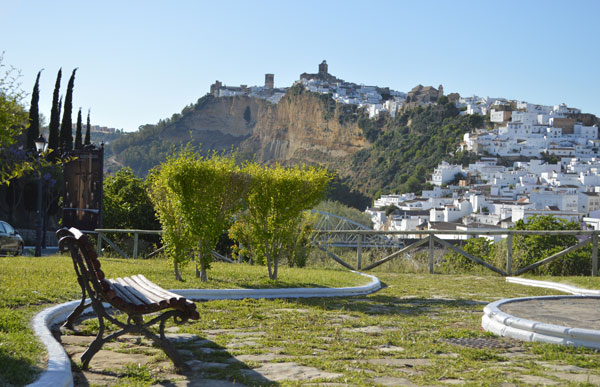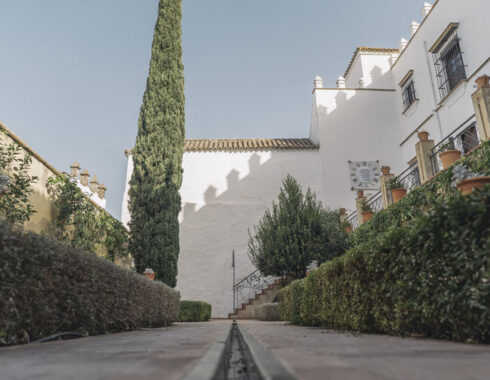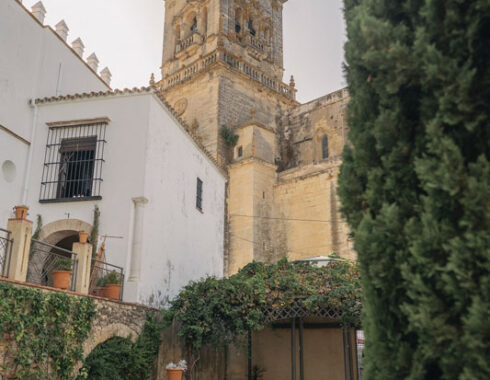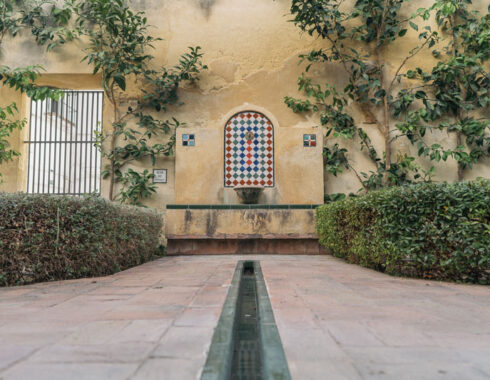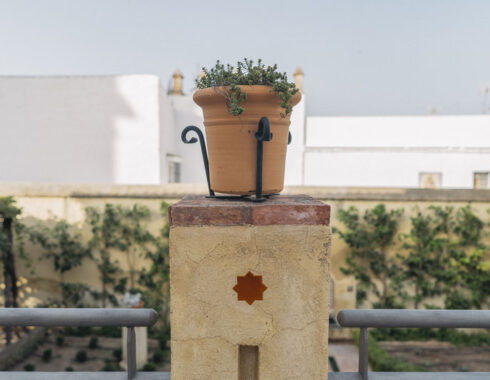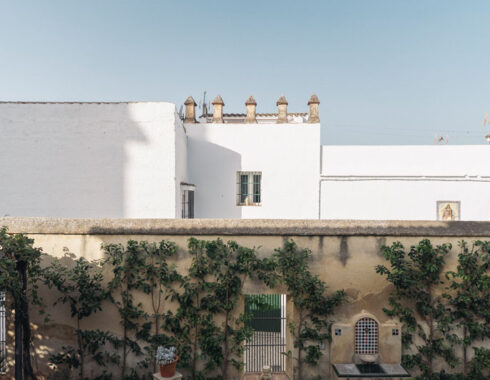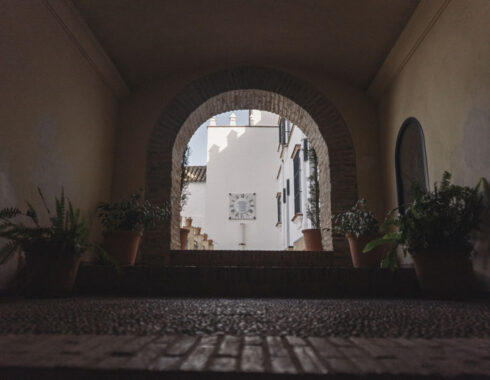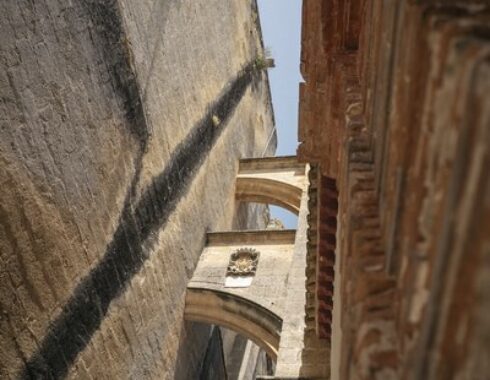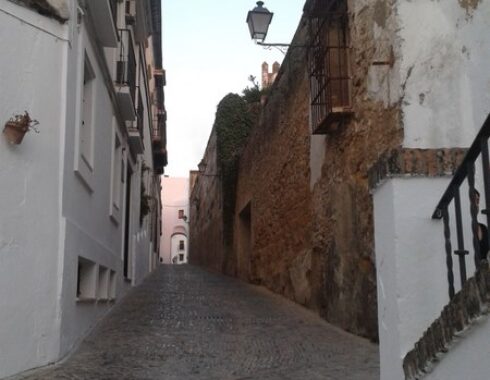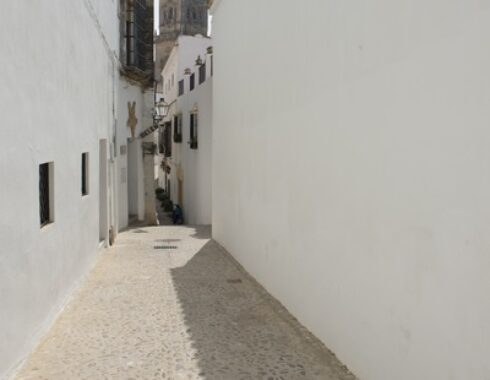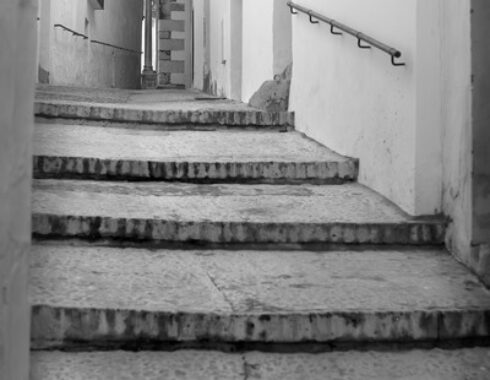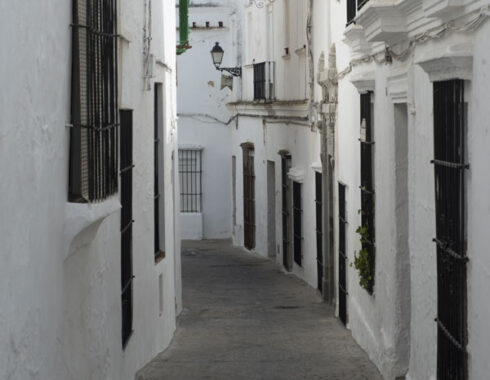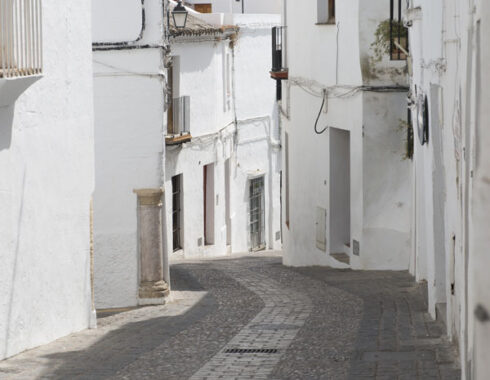CORNERS AND VIEWPOINTS
Viewpoints
Without a doubt, one of the great attractions of Arcos.
Strategic locations situated to enjoy views of this village bread color (as the poet would say) hung on the back of a robust peak, or viewpoints built in the old town where you can stay out of breath to see the beauty that surrounds us.
VIEWPOINTS OUTSIDE TOWN
- Peña Nueva desde Los Cabezuelos.
- Peña Nueva desde La Huerta.
- Peña Nueva desde Mirador P. Blancos (cruce ctra. Junta de los Ríos).
- Peña Nueva desde ctra. de la Junta de los Ríos Peña Nueva desde ctra. de Algar, Peña Nueva-Vieja desde ctra. del Romeral, Peña Vieja desde ctra. del Bosque, Peña Vieja desde El Santiscal, Peña Vieja desde La Presa del río, Peña Vieja desde Camino de las Nieves
.
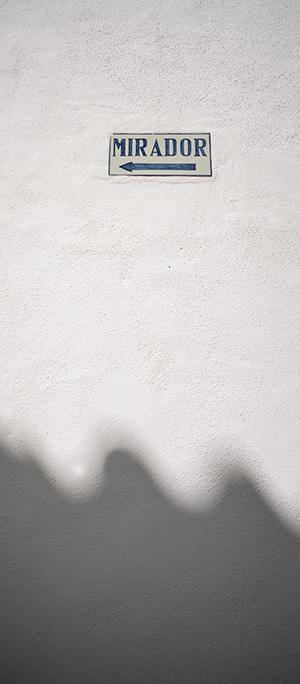
VIEWPOINTS INTHE OLD TOWN
Plaza del Cabildo:
From this space, besides contemplating the imposing architecture of the Basilica and the Plaza del Cabildo, we can admire the Guadalete river valley with its orchards and farmlands, as well as the Sierra de Dos Hermanas, the Sierra de la Sal and enclaves such as Medina Sidonia.
Abades:
From here we can contemplate the flow of the river Guadalete through one of the most significant urban zones, which includes the Lower Town or the area known as ‘María Auxiliadora’, and its imposing Iron Bridge called San Miguel.
San Agustín:
Its high altitude allows contemplation of one of the meanders of the Guadalete river and the mountains of Barranco and of Bornos. From here we can also see the walled part of the city (San Antón Tower), La Angostura, the Arcos dam and even the town of Villamartin.
Old Cliff:
Its location, below the viewpoint of San Agustín Church, affords a good look at the typical constructions of Arcos de la Frontera and its special adaptation to the topographical features of the enclave, which form a labyrinth of steep streets with outstanding examples of architecture like the churches of San Pedro, San Agustín, Santa María, and the castle.
Courtyards
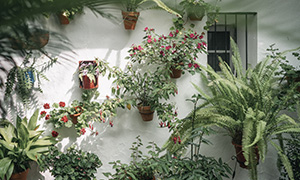
Patio del Parador de Turismo: It is a beautiful courtyard with arches, fountain and native plants.
Patios del Mayorazgo: The courtyards of the Mayorazgo Palace are of Andalusian origin. They are two courtyards with semicircular arches; one of them is practically at the main entrance and the other is more intimate.
Private Patios: Many houses in the old town of Arcos, have a central courtyard. A common point of the popular architecture of Andalusia. They are colorful, full of native plants and fresh water wells.
Andalusian garden
The Andalusian Garden is the consequence of a reform carried out earlier this century at the back of the Mayorazgo House-Palace, which previously corresponded to its stables and play area. In this space we find the fusion of two elements that are indispensable in Andalusian culture and in our own: water and flora, which united in the environment where they are located, take us back to times past.
OPENING HOURS:
Monday: 9 a.m. to 2 p.m.
Tuesday to Thursday: 9 a.m. to 7:30 p.m.
Fridays and Saturdays: 10 a.m. to 2 p.m. / 4:30 p.m. to 7:30 p.m.
Sundays: 10 a.m. to 2:30 p.m.
Information: Telf.: 956 70 30 13 / cultura@arcosdelafrontera.es (Organization of Cultural events)
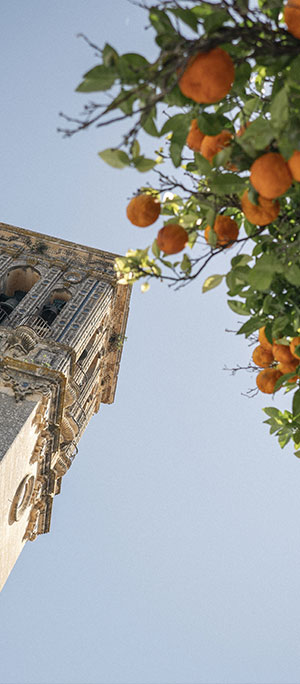
Squares
Cabildo Square:
The French army, before leaving in 1812, dismantled the square almost completely, and buildings like the Palace House of Gamaza (which occupied the site where today the Parador stands), the House of the Scribes, as well as the framed structure, all disappeared. In 1838 the structure of a new square was ordered, the works concluding in 1847.
A good part of Arcos history happened in this square where soldiers and horseman trained, the noble people played, bulls were fought, autos sacramentales were celebrated, there where mornings markets, festivals in the honor of the patron saint, etc. From 1608 there starts the civil life in the square and around it houses start being built.
Plaza de Boticas:
In this Square is located the unfinished Jesuits’ Church which began to be built in 1759, though eight years later the Jesuits were expelled and could not finish it
La plaza del Cananeo:
In Cananeo Square the Autos Sacramentales (religious drama) were represented. There is a house in this square crowned by a Malta Cross. This little square still keep the style of the old Arcos.
Alleys & streets
According to González-Ruano, the streets in Arcos constitute a great sampler of whole Andalucía, That is the reason why discovering the old town requires some time. Several quarters from different centuries lived in these streets, Arabs and Jewish corners mix with other Renaissance, 18th century style and Romantic ones.
There is also, as the brothers de las Cuevas remind us,” an intangible piece from the 16th and 17th century enveloped in silence..”. That is the Arcos of the Knights, the one of the large and crested houses, “taken from foundation and carved. Visit it, understand the hidalgo, notorious nobility, cultivated and dumped in abundance, the deserved coats of arms presiding the façades
Some streets to get lost:
Slope of Bethlehem (Old Jerez Gate):
This street takes its name from the pointed-shaped image of a virgin from the fifteenth century, which was located in a niche on the inside of the ruined Jerez Gate. On this street, near the Hospital of San Juan de Dios, was one of the three gates into the city, dating back to Moorish times, with three arches, a fortification wall of double thickness, a barbican, a moat and a drawbridge. On the lintel, the coat of arms of Arcos (today on the façade of the Town Hall). In 1852, this gate was demolished under the pretext that it interrupted the line of a winding street; some artists witnessed the demolition (Madrazo, Parcerissa) and described it – with good reason – as an act of vandalism.
Calle Nueva (New Street):
It was the ancient moat of the Castle until, in 1755, the Lisbon earthquake knocked down the north wall, leading to the formation of this street. The archway of the street was built in 1684. Of deep poetic flavour: this was where, in 1949, the renowned poetic group “Alcaraván” was founded.
Callejón de las Monjas:
Deep alley open between the Convent of the Incarnation and the rear of Minor Basilica of Santa María
Calle Maldonado,
It is worth to walk along these streets full of local color. There are several noble houses in it.
Cuesta del Socorro:
It is called that way because there used to be there a hermitage dedicated to de Virgin of El Socorro, today disappeared. It is picturesque and steep hill which hides surprises such as the balcony round the corner opposite Cadenas Street. Through this street you will get as Pio Baroja did to “solitary streets white houses with bars…”
Calle Juan de cuenca.
This street is known as jasmine Street. There is a crested mansion which belonged to Juan de Cuenca y Farfán de los Godos. Going downs the street we find the original noble house of the Marquises de Torresoto, where one of the tree great gatherings in Arcos in 1861 was celebrated. And finally we find a beautiful blue tile of Saint Joseph from the 18th century.
Calle Cadenas:
Cadenas (chains) Street took its name from the chains which were put in the doorway of the Yuste de la Torre´s house as a reminder of the visit and staying of Sancho IV.
Calle Cuna(Cot Street):
So named because it includes the entrance of the foundation for abandoned children. Situated in this street was the old granary established by the Catholic Monarchs. The street was chosen by M. Utrillo to be reproduced in the “Spanish Village” of Barcelona.
Calle Callejas:
Winding street that leads you to the Matrera Gate.
And many other streets and alleys that keeps the essence of this white town: Piedra del Molino Street, Altozano Street, San Juan Street, Cuesta de las Monjas…

